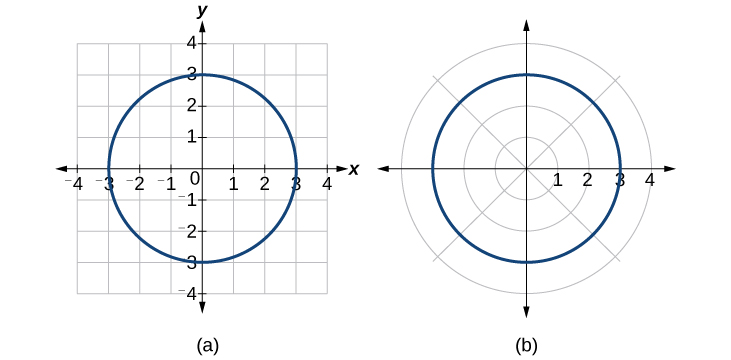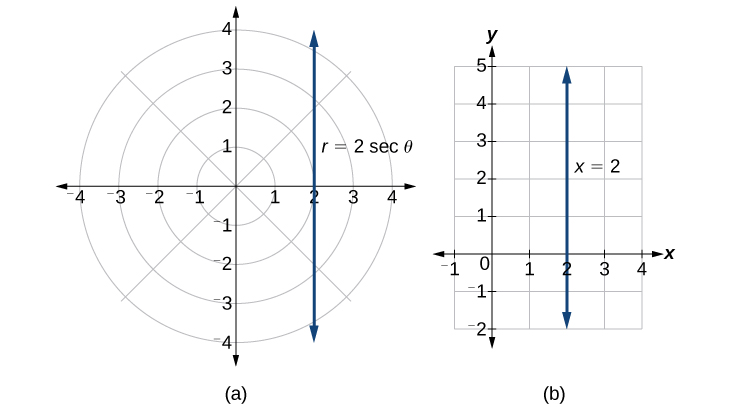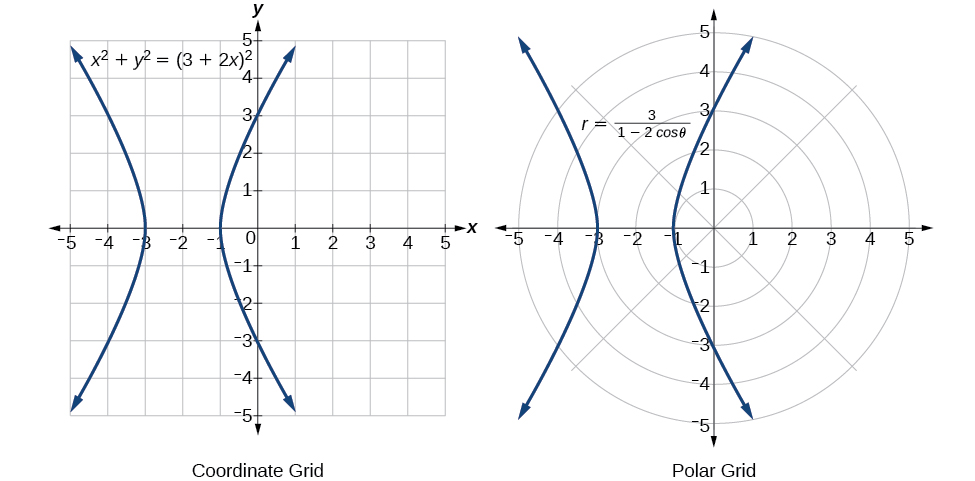6.3: Converting Between Systems
( \newcommand{\kernel}{\mathrm{null}\,}\)
Learning Objectives
- Convert rectangular coordinates to polar coordinates.
- Convert equations given in rectangular form to equations in polar form and vise versa.
Transforming Equations between Polar and Rectangular Forms
We can now convert coordinates between polar and rectangular form. Converting equations can be more difficult, but it can be beneficial to be able to convert between the two forms. Since there are a number of polar equations that cannot be expressed clearly in Cartesian form, and vice versa, we can use the same procedures we used to convert points between the coordinate systems. We can then use a graphing calculator to graph either the rectangular form or the polar form of the equation.
How to: Given an equation in polar form, graph it using a graphing calculator
- Change the MODE to POL, representing polar form.
- Press the Y= button to bring up a screen allowing the input of six equations:
- Enter the polar equation, set equal to
- Press GRAPH.
Example
Write the Cartesian equation
Solution
The goal is to eliminate
Thus,

To graph a circle in rectangular form, we must first solve for
Note that this is two separate functions, since a circle fails the vertical line test. Therefore, we need to enter the positive and negative square roots into the calculator separately, as two equations in the form
Example
Rewrite the Cartesian equation
Solution
This equation appears similar to the previous example, but it requires different steps to convert the equation.
We can still follow the same procedures we have already learned and make the following substitutions:
Therefore, the equations

The Cartesian or rectangular equation is plotted on the rectangular grid, and the polar equation is plotted on the polar grid. Clearly, the graphs are identical.
Exercise
Rewrite the Cartesian equation
- Answer
-
We will use the relationships
Exercise
Rewrite the Cartesian equation
- Answer
-
Identify and Graph Polar Equations by Converting to Rectangular Equations
We have learned how to convert rectangular coordinates to polar coordinates, and we have seen that the points are indeed the same. We have also transformed polar equations to rectangular equations and vice versa. Now we will demonstrate that their graphs, while drawn on different grids, are identical.
Example
Covert the polar equation
Solution
The conversion is
Notice that the equation

A similar discussion would demonstrate that the graph of the function
Example
Rewrite the polar equation
Solution
The goal is to eliminate
The Cartesian equation is
When our entire equation has been changed from

The “hour-glass” shape of the graph is called a hyperbola. Hyperbolas have many interesting geometric features and applications, which we will investigate further in Analytic Geometry.
Analysis
In this example, the right side of the equation can be expanded and the equation simplified further, as shown above. However, the equation cannot be written as a single function in Cartesian form. We may wish to write the rectangular equation in the hyperbola’s standard form. To do this, we can start with the initial equation.
Exercise
Rewrite the polar equation
- Answer
-
Example
Rewrite the polar equation
Solution
This equation can also be written as
Extra Practice
For the following exercises, convert the given Cartesian equation to a polar equation.
For the following exercises, convert the given polar equation to a Cartesian equation.
For the following exercises, convert to rectangular form and graph.
Key Equations
|
Conversion formulas |
|
Key Concepts
- Transforming equations between polar and rectangular forms means making the appropriate substitutions based on the available formulas, together with algebraic manipulations. See Example
- Using the appropriate substitutions makes it possible to rewrite a polar equation as a rectangular equation, and then graph it in the rectangular plane. See Example
Contributors and Attributions
Jay Abramson (Arizona State University) with contributing authors. Textbook content produced by OpenStax College is licensed under a Creative Commons Attribution License 4.0 license. Download for free at https://openstax.org/details/books/precalculus.

